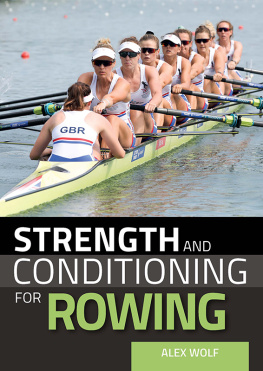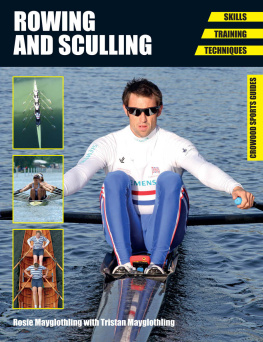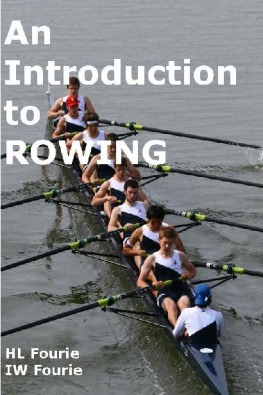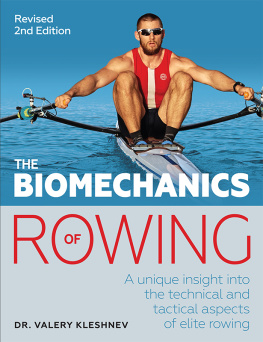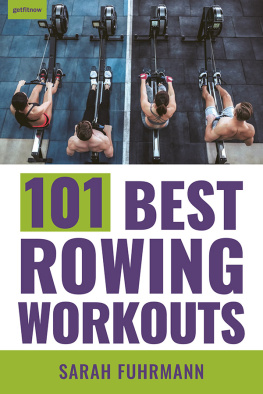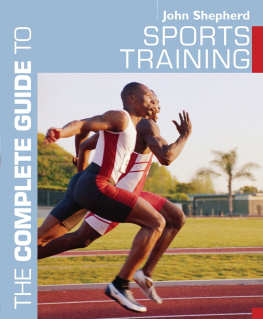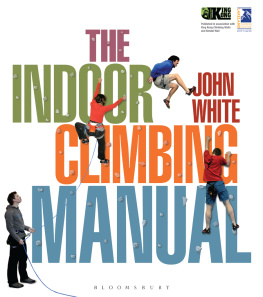
Note
While every effort has been made to ensure that the content of this book is as technically accurate and as sound as possible, neither the author nor the publishers can accept responsibility for any injury or loss sustained as a result of the use of this material.
Published by Bloomsbury Publishing Plc
50 Bedford Square
London WC1B 3DP
www.bloomsbury.com
First edition 2012
This electronic edition published in May 2012 by Bloomsbury Publishing Plc
Copyright 2012 Jim Flood & Charles Simpson
ISBN (print) 978 1 4081 3332 3
ISBN (e-pdf) 978 1 4081 7872 0
ISBN (epub) 978 1 4081 7873 7
All rights reserved. No part of this publication may be reproduced in any form or by any means graphic, electronic or mechanical, including photocopying, recording, taping or information storage and retrieval systems without the prior permission in writing of the publishers.
Jim Flood and Charles Simpson have asserted their rights under the Copyright, Design and Patents Act, 1988, to be identified as the author of this work.
A CIP catalogue record for this book is available from the British Library.
Acknowledgements
Cover photograph Getty Images
Inside photographs Grant Pritchard unless otherwise specified and excluding the following: photographs provided by case subjects.
Illustrations by David Gardner
Designed by James Watson
Commissioned by Charlotte Croft
Rowing machines have been used in gymnasia for over 100 years but the last 10 years have seen a huge growth in the number of people using them. This phenomenon is associated with the growth of fitness centres and the modern desire for an athletic body shape, a combination that rowing machines in particular have benefited from.
So why is the rowing machine proving to be so popular? The answer is probably a result of the smooth feel of the rowing action, the low impact on the limbs and the large range of muscles that are exercised. For the many people who suffer from knee problems that limit their ability to run or to exercise, it is an ideal solution.
There is increasing evidence that exercise can help in the treatment of depression. Exercise helps people to improve their confidence and self-image, gives them positive goals and releases endorphins, the hormones that induce feelings of well being. It can also improve sleep and reduce stress. Rowing machines are easy to use and provide an ideal introduction to an exercise programme for beginners.
Relieving stress though exercise is also a useful process for men and women in the armed services. In many of the fortified camps used by the coalition forces in Iraq and Afghanistan, rowing machines are used to provide intensive exercise in places where space is at a premium. Another place where space is at a premium and it is necessary to exercise is on the International Space Station, where a rowing machine is used by astronauts to maintain fitness and bone density.
Rowers have been using rowing machines since the late 70s both for fitness training and to develop good technique. When rowers had to train on rowing machines because of dangerous conditions on the water, this inevitably led to competitions over set distances much like regattas only using rowing machines instead of boats. This soon developed into a separate sport based on competitions using rowing machines.
Indoor rowing competitions began in the United States and quickly spread. The British Indoor Rowing Championships is now the largest participatory indoor sporting event in the UK. In 2010, throughout the world:
40,000 athletes competed in indoor regattas;
400 indoor rowing events were staged in 40 countries; and
1900 athletes competed in the World Indoor Rowing Championships.
There are many more smaller competitions organised by fitness centres and schools. For example, in 2010, over 7000 students in 20 schools in County Durham (UK) took part in a Get Going, Get Rowing competition. In London in 2011, over 2500 students between the ages of 14 to 18 took part in an indoor rowing event organised by London Youth Rowing. In both of these examples, the vast majority of the participants were from state schools a point worth emphasising because in the UK, junior rowing on water is still dominated by private schools.
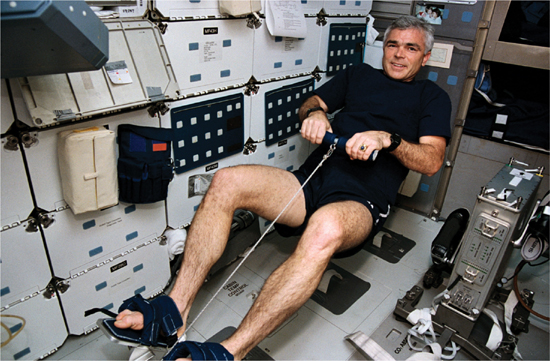
Fig 0.1 Astronaut Michael R. (Rich) Clifford, mission specialist, uses the rowing machine temporarily deployed on the Space Shuttle Endeavours mid-deck. Many of the crew members put in time on the device during the week and a half mission (courtesy of NASA with permission)
For competitions it is necessary to have a standard machine which is the Concept2 rower. The key factor is a display unit that can be programmed to ensure that competition between participants is absolutely fair. For example, if rowers set the drag lever at different settings, the microprocessor in the display unit will still calculate how far they travel with each stroke.
New technologies have opened up the possibility of virtual competitions. You can now hook up your Concept2 machine to a computer and compete against other rowers thousands of miles away. You can also check your fitness levels against tables of results and obtain advice on training and technique.
WHAT THIS BOOK AIMS TO ACHIEVE
This book has been written as a resource for individual rowers, coaches and trainee coaches. Because it is in the format of a resource, it is not necessary to read the chapters in sequence. Find the sections that interest you and make this a starting point to explore further. We have aimed to provide basic information that can be used as a resource for beginners, as well as detailed advice and analysis on technique and training.

Fig 0.2 Competitors in the 2010 British National Junior Indoor Rowing Championship (courtesy of London Youth Rowing with permission)
We believe that skilled coaching is vital so , which covers coaching styles and techniques, is important to us. You might not be a coach but this section should enable you to have informed discussions with your coach about the style of coaching that suits you best.
Sport now draws on the sciences of physiology, biomechanics, nutrition and psychology, and our work draws on the latest research in these fields. We have aimed to provide a basic grounding in these areas so that you will have a basis for more advanced study.
We have included case studies on individual rowers. We hope that you will be able to identify with, and learn from, some of their thoughts and experiences. They are of different ages and backgrounds a reflection of the broad base of society from which indoor rowers are drawn. Several of them are senior citizens, proving that age is no barrier to this sport. In fact the benefits of exercise for those over 50 are now well recognised, and indoor rowing provides a low impact form of exercise, making it an ideal system for this purpose.
Indoor rowing has also been quicker than most sports to provide opportunities for the participation of people with disabilities. Adaptive rowing events have been included in competitions since 2004, another aspect of the inclusive nature of this sport.
If you are using a rowing machine to train for rowing, then you will find much useful information that will help with your technique and training. Using a rowing machine is not just about getting the highest score possible you can use it to improve your speed on the water through better technique.


